What is the best first knife for a beginner?
Here are two contenders that can handle just about any knife task.
by Leon Pantenburg
What knife should I get for my kid? I get that question a lot. There are a lot of choices out there.
First off – don’t just get any old knife, hand it to the youngster and let them have at it. Do some safety training and teach knife handling before giving them a tool that can potentially injure them or others.
In the BSA, there is a regular training program before a scout can carry a knife. After the scout completes the training and demonstrates his/her knife and axe skills, they are issued a “Totin’ Chip”. If your youngster is not a scout, look up the qualifications for earning the chip and take it from there.
What is the best age for that first knife? That depends on the child and their maturity level. That varies. I got my first pocket knife when I was about eight or nine. I grew up on an Iowa farm, and one of my nightly chores was to throw hay to the cows. Naturally, I had to have a knife to cut the hay bale twine with.
The first choice that has to be made is: folder or rigid blade. Both have their strong points, and you’ll have to make your choice based on intended use, where the knife will be carried and it may be called upon to do.
I love folders and carry at least one every day. On my 1980 Source-to-Sea canoe voyage on the Mississippi River, I carried a large Buck folder. It was more discreet in the pouch on my belt, and less liable to attract undue attention from law enforcement personnel. (This becomes important when traveling through backwater river towns!) The folder was used for everything, and cleaned hundreds of fish.
But I carry a rigid knife whenever possible. The weak point on any folder is the hinge. If that breaks, you’re left with two pieces and an inoperable tool. The hinge is also expensive to make. If costs need to be cut in manufacturing, that may be in blade steel quality.
Do some research and think about these considerations.
Cost should be one consideration for a kid’s knife. That first knife should be high quality, so it is safe and efficient to use, but inexpensive, since it will probably be lost.
What will the knife be used for? A knife for cleaning and filleting fish is different from a whittler and is different from a bushcrafter. Decide what the knife is most likely to be used for and choose accordingly.
Where will it be carried? These days, carrying any sort of sharp tool can be a problem. Check with your local laws to make sure the youngster doesn’t inadvertently get in trouble taking a knife to the wrong place.
There are many cutlery choices that meet the first knife criteria. Here are two knives I have used extensively and can recommend without reservation.
Buck Bantam: This folder combines Buck quality with a handy size and a locking blade. Here are the specs:
- Blade Length: 3 1/8″ (7.9 cm)
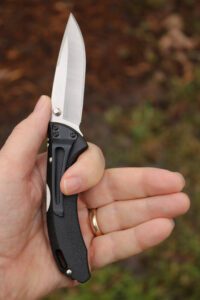
The Buck Bantam is a solid user knife. The handle is ergonomic for most people.
- Blade Material: 420HC Stainless Steel
- Carry System: Stainless steel belt/boot/pocket clip
- Handle Material: Thermoplastic, textured
- Length Closed: 4 3/8″ (11.1 cm)
- Weight: 2.4 oz. (68.3 g)
- Cost: Under $20
My daughter Mary is an avid backpacker, rock climber and wilderness adventurer and travels all over the world. She frequently carries a Bantam. Originally, I got her and her brother Dan Benchmade Griptillians, a higher quality and more expensive folder. Mary’s Griptillian was lost when she forgot it in her backpack and TSA confiscated the knife at the airport.
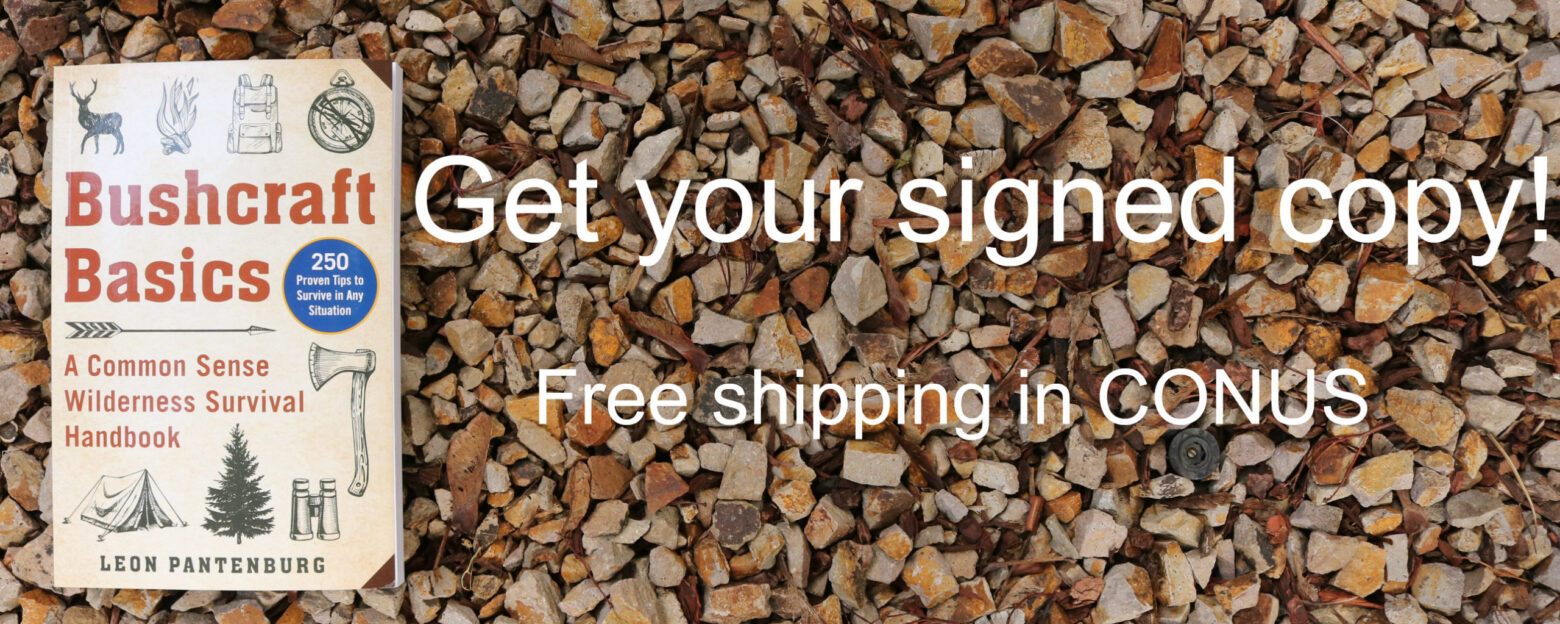
Her Griptillian was replaced with a Bantam. Dan is still using his original Griptillian.
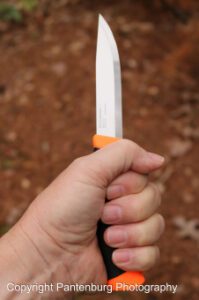
The Mora 840 Companion is a great choice for a beginner rigid blade knife.
Mora 840 Companion: This is my number one choice for a rigid blade. (Read the Companion review.) and the one I’d recommend over a folder for beginners.
Companion Specs:
- Fixed blade outdoor knife with 4.1-inch high carbon steel blade
- Limited lifetime manufacturer’s warranty; Made in Sweden
- Patterned, high-friction grip makes the knife comfortable to hold and easy to handle
- Blade length: 4.1 inches (104 mm)
- Blade thickness: 0.08 inch (2.0 mm); Overall length: 8.6 inch (218 mm); Weight w/ sheath: 3.9 oz. (110 g)
- Cost: Under $20
About 15 years ago, Boy Scout Troop 18, in Bend, Oregon bought 40 Mora 840s in bright orange for the boys to use. Buying in bulk, the scout troop got a great deal: the troop sold these to the boys for $8 each. Later, the troop bought another 50, that sold for $10 each.
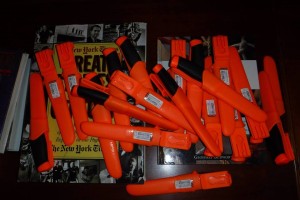
BSA Troop 18 bought 50 Mora 840 Companions over the years for the scouts to use.
I have not seen any of these Moras break or fail in any way, despite the hard wear put on them. The scouts use them for everything, from cleaning fish to Dutch oven cooking.
One of the adult leaders, former scoutmaster and Eagle Scout Dr. Pat Simning, has used his Mora for field dressing moose, caribou, deer, elk and wild hogs. After a successful elk hunt in 2015, Pat upgraded to a Bark River Snowy River. But he still takes his Mora along on hunts.
The advantage a rigid blade has over a folder is that it won’t accidentally fold onto your fingers. In an informal survey of scoutmasters at a district campout, I found that the number one cause of accidental cuts among scouts was the folder folding on fingers.
A lock blade reduces these chances somewhat, but any mechanical device can fail.
Another consideration is sanitation. If fish goo and slime, feathers or other nasty things get in the channel of the folder, it is a mess and hard to clean up.
Some scout leaders ban rigid blade knives, but the BSA doesn’t. There are sound reasons for scouts to carry and use rigid blade knives.
Whatever knife you choose, make sure the beginner uses it safely and has fun using it outdoors.
Please click here to check out and subscribe to the SurvivalCommonSense.com YouTube channel – thanks!

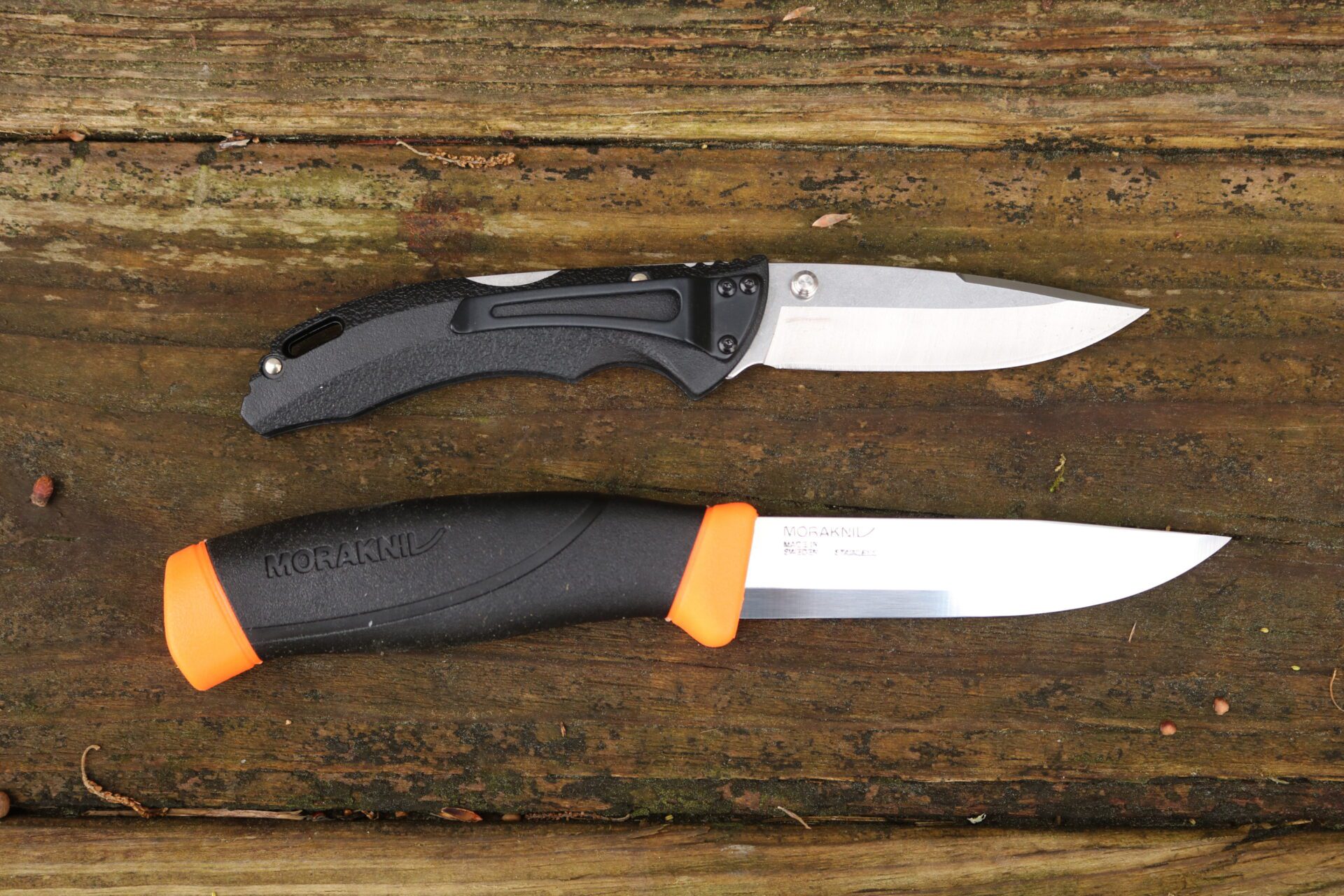
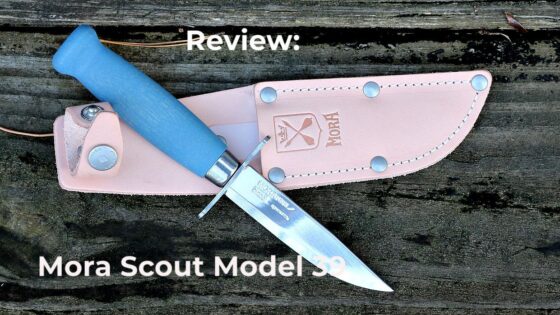
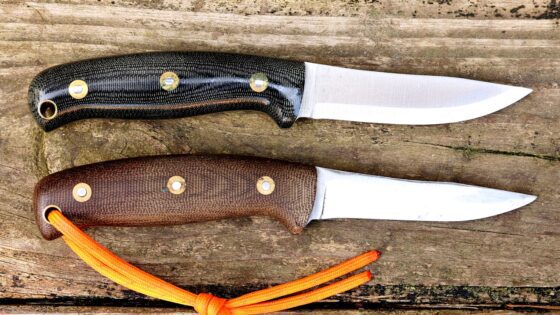
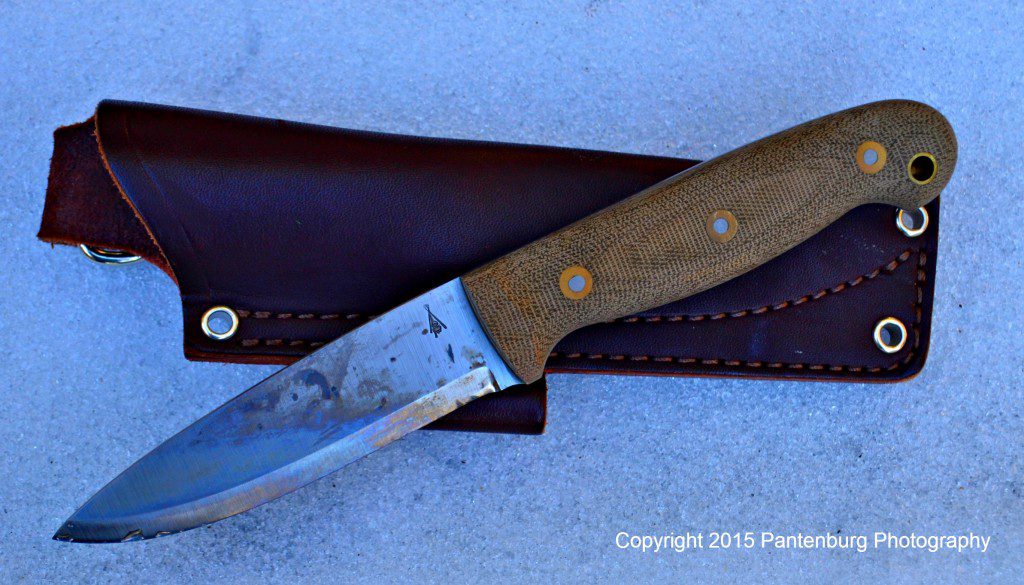
Leave a Reply